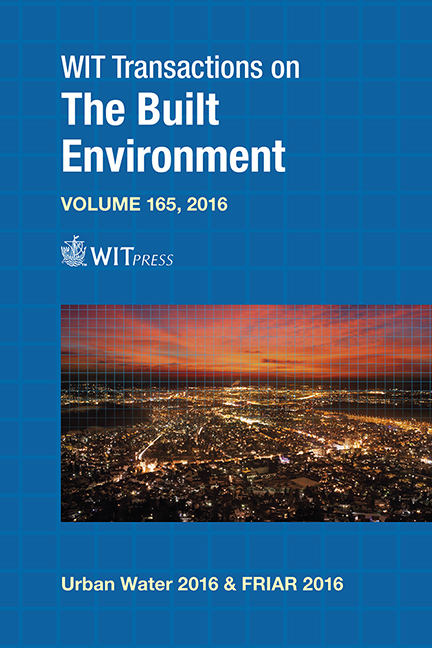Using Mass Flow Analysis (MFA) To Estimate The Performance Of Scenarios For A Rainwater Harvesting System In Tyseley, Birmingham, UK
Price
Free (open access)
Transaction
Volume
165
Pages
11
Page Range
119 - 129
Published
2016
Size
1,286 kb
Paper DOI
10.2495/UW160111
Copyright
WIT Press
Author(s)
D. V. L. Hunt, L. O. Makana, C. D. F. Rogers
Abstract
Water is a precious natural resource and as populations grow the demand for its increased usage in many sectors is becoming widely apparent. Water Demand Management (WDM) has all too often been inwardly focussed and until recently has not considered sufficiently well the interdependencies that exist and loom large on the not too distant horizon (e.g. meeting rising mains water demands and wastewater removal requirements, whilst reducing pluvial related flood risk in peak storm events) storing up pinch-points for the future. The end-user is one area where changes to WDM can help to alleviate these problems through locally supplied water sources and provision of interim storage for rainfall.
This paper considers 175 scenarios for a RWH water supply system within the Tyseley Demonstrator project in Birmingham, UK, based upon 5 different years of rainfall data (2010 to 2014) and 35 variations in tank size, roof size and occupancy rates. Findings show that depending on these ranges of local conditions a RWH system has the potential to reduce ‘Annual Mains Water’ inflow by 4.3% to 18.0% and ‘Annual Storm Water’ outflow by 34% to 100%.
Keywords
rainwater harvesting, water demand management, pluvial flood risk





